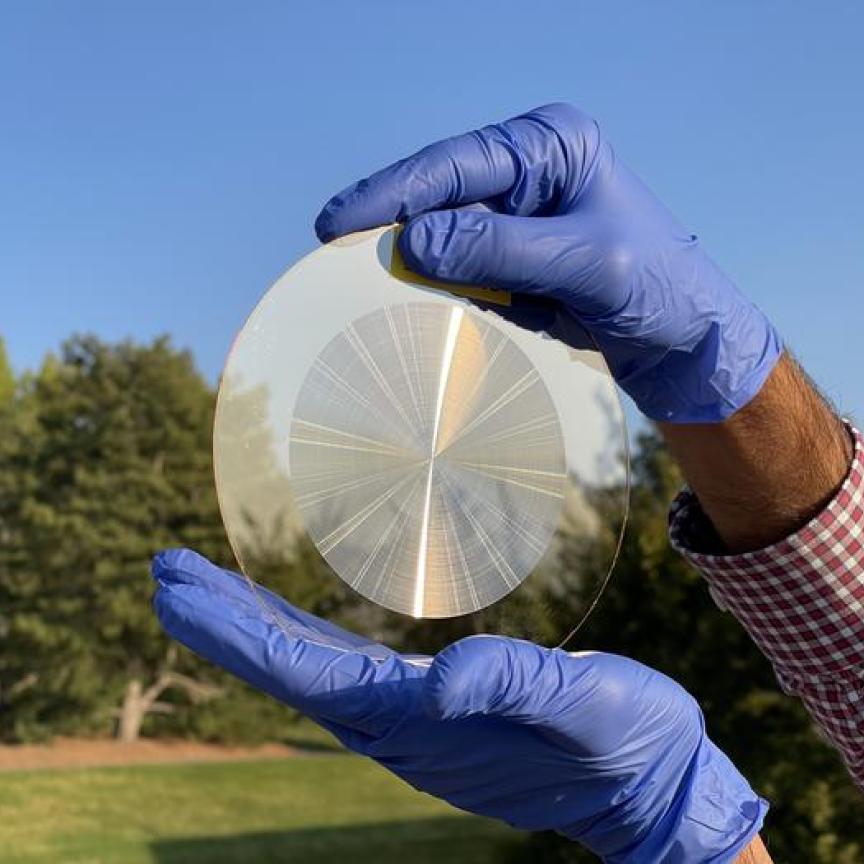Located on the Canary Island of La Palma, the Swedish 1-meter Solar Telescope (SST) is the world's leading facility for high resolution observations of the Sun. It is operated by the Institute for Solar Physics(ISF), which is part of Stockholm University's department for Astrophysics. Research at the institute primarily aims to gain knowledge about the outer layer of the solar atmosphere, which is dominated by magnetic fields.
The mystery of the sun is explored using observational data registered with the Swedish Solar Telescope. The telescope system looks at 60 x 60 arc-seconds of the Sun, which equals 43,320 x 43,320 km on the solar surface. This is an area that is more than three times bigger than the Earth's surface but represents only 0.03% of the Sun's surface.
The telescope uses adaptive optics to reduce the effects of atmospheric distortion. Atmospheric distortion is caused by the Earth's atmosphere, which bends the light in random directions. It is the reason why stars seem to twinkle and why the Sun seems rippled at sunset. Without adaptive optics, the Swedish Solar Telescope would generate blurry images.
The Concept of Adaptive Optics
The adaptive optics system within the Swedish Solar Telescope, which was funded by the Swedish Research Council, consists of a Shack-Hartmann wavefront sensor and a deformable mirror. The Shack-Hartmann wavefront sensor is a glass plate with many lenslets etched on it, which subdivide the pupil of the telescope in 85 segments. Each segment delivers an individual image of the Sun. When the atmosphere disturbs the image, it causes the image to shift, and this shift is different for each segment. The shifts are measured and translated into commands to the deformable mirror, so that it takes a shape that compensates for the distortions.
The Need for High-Speed Equipment
The problem is that the atmosphere changes quickly, so this has to be done very accurately and at a very high frequency. The adaptive optics system at the Swedish Solar Telescope has to correct the deformable mirror at least several hundred and preferably more than 1,000 times per second. This requires high-speed equipment.
The EoSens® CL high-speed camera by Mikrotron was installed and is now used to record images formed by the Shack-Hartmann wavefront sensor. The honeycomb pattern that is created is composed of many small images of the Sun, each produced by one segment of the pupil. As the image is being sent to the computer, it is already being processed. By the time the last lines of the camera image are being received, the computer has already calculated the phase variation of the whole pupil. It then only has to calculate how to shape the mirror to produce an inverse phase variation. Within one second, 2,000 images are extracted, pre-processed and measured.
Provision of Raw Data
At the Swedish Solar Telescope, both the digital gain and the fixed-pattern noise (FPN) correction are switched off to ensure the EoSens® CL delivers raw data. "The reason we do not want the camera to do any corrections is because our optical system itself is not perfect, and also introduces variations in gain and offset for each pixel," explain one of the research engineers. "So we measure the dark field and flat field for the whole optical system, and apply the correction using our software." One exception is the black level offset. It is raised accordingly to ensure that, even in total darkness, the pixel values are always above 0."
When asked about the camera's best features, the engineer mentions its uncompromising speed and excellent performance. He also highlights its easy handling. "It does not require firmware updates and proprietary tools. The serial interface ASCII is also easy to use. It is very solid and compact and its screw holes are very well placed, making it easy to mount."

